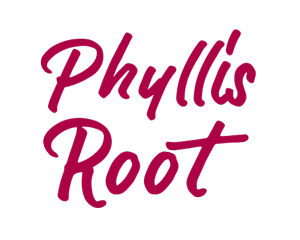About Phyllis
Once a little baby girl was born in Fort Wayne, Indiana. She learned to read in her high chair, so the family story goes, and fell in love with books. She loved to be outside. And she loved the sound of words.
When she was five or so she made up her own language, but she couldn’t remember what the made-up words meant.
When she was in second grade she won an African basket that she still has for her four-sentence essay on the Sahara Desert (which she also still has).
When she was in fifth grade, her amazing and wonderful teacher Mrs. Kelling encouraged everyone to do what they liked to do best, and what she liked was to write. That year she wrote plays that the class performed, and she realized the importance of audience. She decided when she grew up to become a writer.
When she was in college she discovered the bookshelf in the library basement where the picture books for the elementary education students were kept. In the dim basement light the illustrations seemed to glow, and she decided that she wanted to have a part in these glorious creations.
But she didn’t know how to write picture books, and she had it in her head that writers were born, not made. So since she couldn’t just sit down and write for children (although she tried) she thought she must not be a writer. When she graduated from college she went out into the world to work various jobs, but all the while a little voice whispered, “What I really want to do is write for children.”
One day she said it out loud to a friend who was a writer.
“Well, why don’t you then?” her friend asked.
“I don’t know how,” she confessed.
“Take a class,” said the friend.
And so she did. The teacher said that anyone could learn the mechanics of writing—plot, character, setting, tension, resolution—and that once these were learned, the most important thing was to write from the heart.
So she began.
Her first attempt at a picture book was roughly 20 typed manuscript pages long.
But she kept at it. Each morning she worked from 7 until 12 at her dining room table, teaching herself how to write. Each afternoon she worked as a waitress to pay the bills. Her college roommate, now a banker, made her send one completed story a month, and so she learned the importance of deadlines. After a year she began to send her stories out.
Rejection followed rejection followed rejection, and she learned the importance of persistence.
One day an acceptance letter arrived from Cricket Magazine. Her hands shook so much she dropped the letter. That story was Moon Tiger, her first real sale and later her first published picture book.
Since then, she has published fifty books, including Big Momma Makes the World, which won a Boston Globe Horn Book Award, Aunt Nancy and Old Man Trouble which won a Minnesota Book Award, Plant a Pocket of Prairie which won a John Burroughs Riverby Award, as did One North Star two years later, along with a Northeast Minnesota Book Award and an Midwest Independent Booksellers Award.
She supports her writing habit by doing work for hire, editing, teaching, reviewing, and manuscript critiques and has learned that all writing is practice and that practice makes us better writers.
She lives in Minneapolis, Minnesota. She still loves to read, still loves being outdoors, still loves the sound of words.
And she is still writing.
![]()



